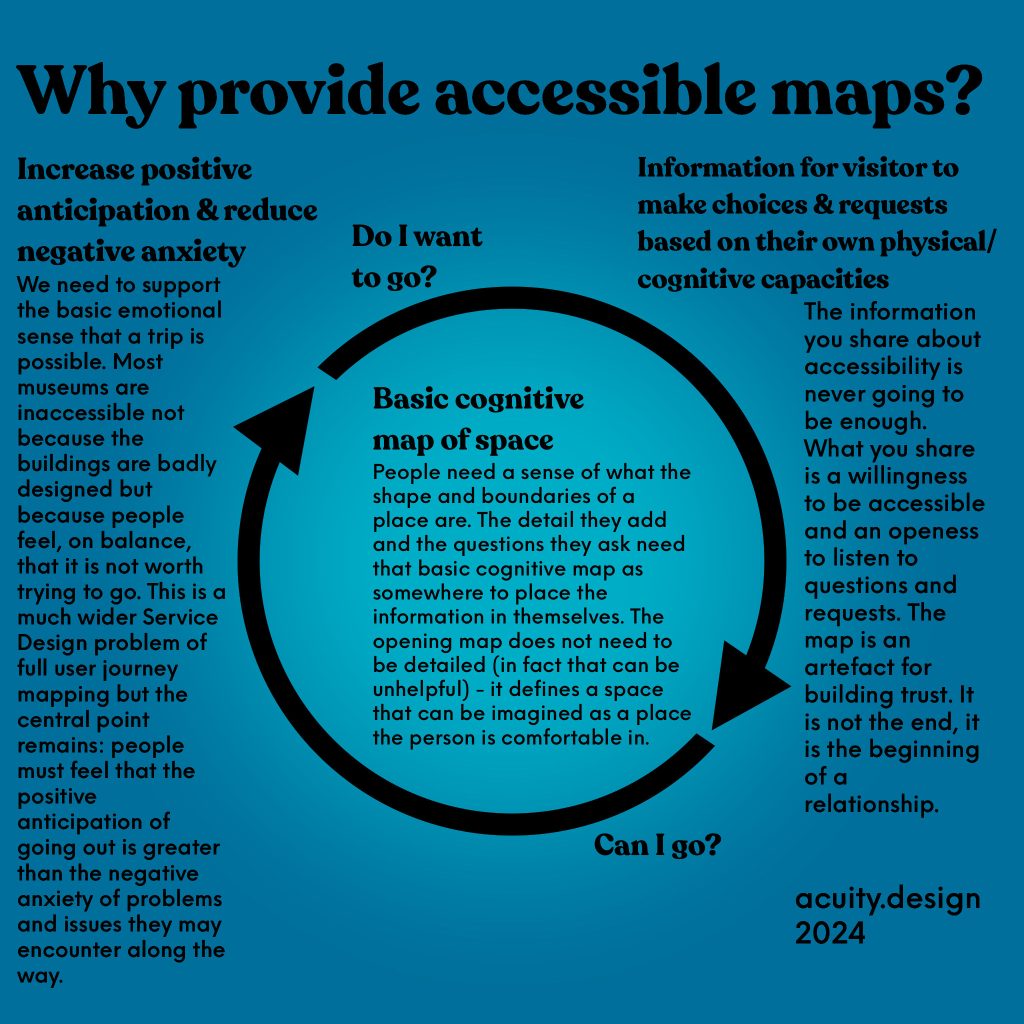
This is a post about making and offering accessible maps but, more fundamentally, it is about creating a space for people to put their dreams and fears.
Humans create cognitive maps within themselves. They imagine, learn and perceive so much and need some way of creating patterns to find meaning and intention for action. This is the internal sense of the importance of maps.
The maps we design and make for people (on paper and on screen) are the external partner for these cognitive maps. When designed well they align and fuse together. The extended map, both within and outwith.
This is why maps are not simply about showing a person where they are or what the space around them is made of. Maps are layered with the physicality of space and the emotional imaginaries of what could be done and cannot be done.
The boundaries of a person’s place and the boundaries of a person’s hopes.
Thus the offer of a map is not just about the mudane location of rooms around the space. It is also an artefact for a person to consider what they dream and fear about going there.
In accessible design terms, how do we increase positive anticipation of a journey or an interaction that meets the user’s intentions and how do we reduce the anxiety that may prevent a person even trying to do the thing they want?
The map is thus a place of conversation. Showing what is possible and how. Confirming what is available and usable. Inviting and welcoming.
Accessible as a place is not enough though.
Accessible as people is needed.
You offer information and explanations of what you think matters and how a place is usable. However, that is not enough. People must be able to access you and ask about things from their own perception of place and the living experience of their own physical and cognitive capacities.
The map is an offer to be accessible, to listen and respond to questions and requests.
Too often the map as designed, manufactured and distributed is viewed as a completed project. We have explained our place to you and that is the end.
Yet, in accessibility terms, it is the start. Showing what is possible, what seems impossible and creating a space for conversation about change.
Staff at information desks in museums and transports hubs use maps as an artefact during their conversations with customers. They negotiate the meaning of a place together.
The map enables, not because it explains the place, because it creates a shared space for dreaming and talking.